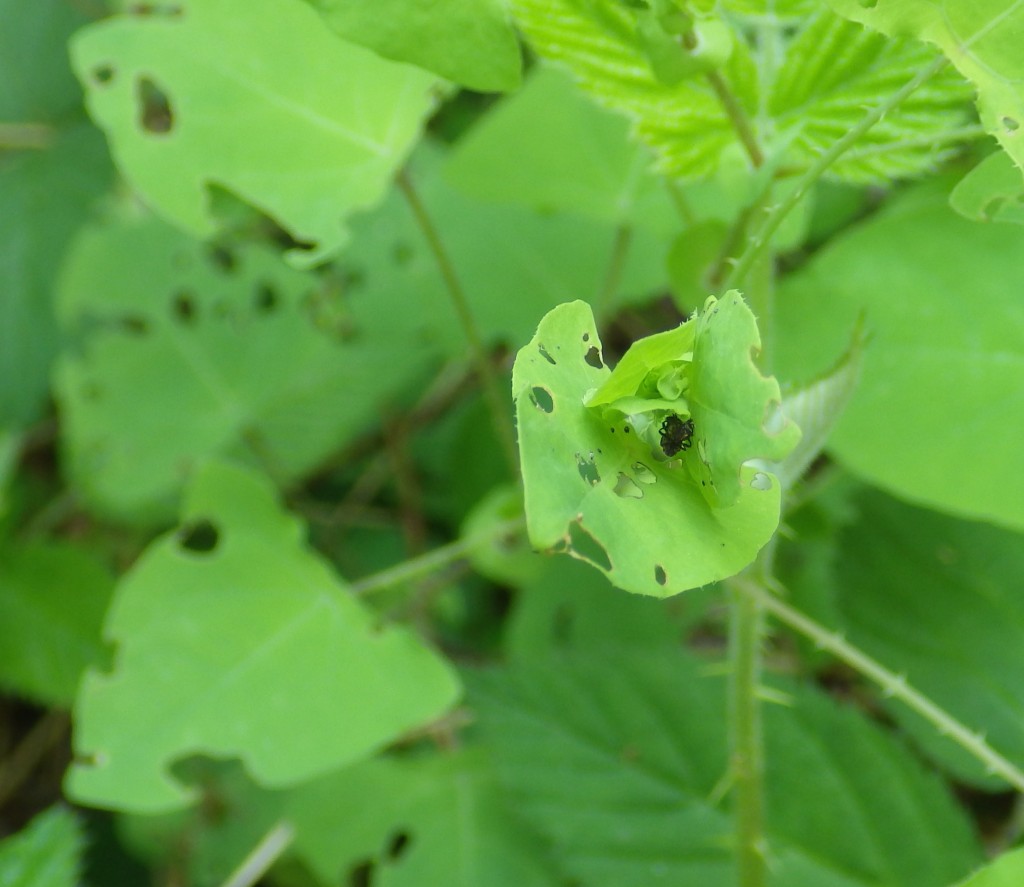Last year Suffolk County experienced its driest growing season in over twenty years. Riverhead received only 21.96 inches of precipitation from March 1 to October 31, 2015, which is 9.27 inches less than the ten-year average rainfall for Riverhead. The last four years in particular have seen a steady decrease in our precipitation, averaging only 26.22 inches in comparison with the previous six year’s average of 34.58 inches. We are surely in a dry spell, but only time will tell what 2016 has in store for us. So what did last year’s dry season mean for our landscapes? For one thing, we dragged the hose around more often in an effort to keep plants alive. This was especially true for container plantings, vegetable gardens, newly planted plants, and probably your lawn. Then again, if you left your landscapes to fend for themselves last year, it’s possible you’ll notice more winter damage this spring.
So what did last year’s dry season mean for our landscapes? For one thing, we dragged the hose around more often in an effort to keep plants alive. This was especially true for container plantings, vegetable gardens, newly planted plants, and probably your lawn. Then again, if you left your landscapes to fend for themselves last year, it’s possible you’ll notice more winter damage this spring.
New plantings and transplants, especially of larger trees and shrubs, are probably the hardest to maintain in droughty growing seasons. Keeping the soil moist is very important for establishing strong plants. During the first year of planting, be sure to water trees deeply at least once every week during dry spells; with rainfall, once every two weeks should be fine. Applying a two- to three-inch layer of mulch around them will help keep their roots moist and reduce evaporation from the ground.
During the first autumn after planting trees and shrubs, watering them once every four weeks is recommended. In their second year, these plants should receive supplementary irrigation once every four weeks in the spring, once every three weeks in summer, and once every five weeks in autumn. The key to these waterings is deep and infrequent. A plant should always enter autumn and winter with ample moisture in its system. Research has shown that mid-August through September is the most important time to prepare plants to tolerate winter stress. Once winter arrives and the ground freezes, a plant cannot replace water lost to transpiration by winter sun and wind, making it susceptible to winter injury and die-back.
Most gardeners set out a few containers and pots of plants around their yard each year. These are the plants we need to watch closely during consistently hot, dry days. The trick to watering containers is just like any of your other plants: Water deeply! Let the water run until you see it coming out of the bottom of the pot, which will encourage roots to grow longer, deeper, and ultimately healthier and more resistant to dry days. This year consider creating containers filled with such drought-tolerant species as zinnias, gazanias, salvia, lavender, and dusty miller, or design contemporary containers filled with ornamental grasses or succulents. You could also invest in some self-watering pots that take the guesswork out of when and how much to water, so you don’t have to water your plants every day to keep them hydrated.
Last year after the first flush of spring growth, lawns quickly started gulping for rainfall. Many irrigation systems struggled to keep up with the water demand, and many homeowners without in-ground irrigation weren’t willing to set up sprinklers every day. Typically lawns require an inch of water per week, so professionals often recommend letting lawns without irrigation go dormant over the summer. The majority of lawns on Long Island are made up of cool-season grasses (Kentucky bluegrass, perennial ryegrass and fescues). These grasses look and perform their best in the cooler months of April-June and September-November and prefer to go dormant in the heat of the summer unless they are provided with adequate moisture.
Other factors besides drought last year may affect the health of our plants this year. White oaks were severely defoliated by gypsy moths in 2015. Although oaks can recover and push out a new flush of growth in the same growing season, last year’s drought while they were in recovery may be detrimental to their growth this year. Landscapes damaged by Super Storm Sandy may also be set back by the drought as sufficient water is critical to their long-term recovery. And established trees and shrubs that experienced root disturbances from new driveways, fences, pool installations, or any construction job using heavy equipment and machinery, may struggle as a result of the 2015 drought as well. How your landscape will look this year is pure speculation at this point, but bear these thoughts in mind when monitoring the health of your plants in 2016.
Sandra Vultgaggio is Horticulture Consultant for CCE Suffolk. She can be reached by email at sib7@cornell.edu or by phone at 631-727-7850 x387.



